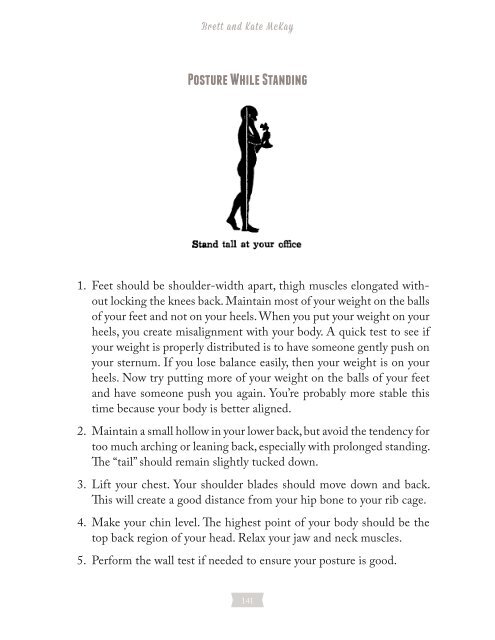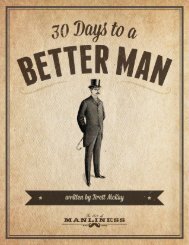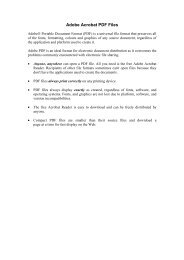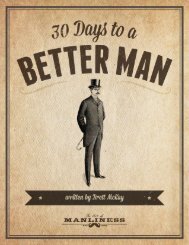588b1c58c8a68278cfc28555
Create successful ePaper yourself
Turn your PDF publications into a flip-book with our unique Google optimized e-Paper software.
Brett and Kate McKay<br />
Posture While Standing<br />
1. Feet should be shoulder-width apart, thigh muscles elongated without<br />
locking the knees back. Maintain most of your weight on the balls<br />
of your feet and not on your heels. When you put your weight on your<br />
heels, you create misalignment with your body. A quick test to see if<br />
your weight is properly distributed is to have someone gently push on<br />
your sternum. If you lose balance easily, then your weight is on your<br />
heels. Now try putting more of your weight on the balls of your feet<br />
and have someone push you again. You’re probably more stable this<br />
time because your body is better aligned.<br />
2. Maintain a small hollow in your lower back, but avoid the tendency for<br />
too much arching or leaning back, especially with prolonged standing.<br />
The “tail” should remain slightly tucked down.<br />
3. Lift your chest. Your shoulder blades should move down and back.<br />
This will create a good distance from your hip bone to your rib cage.<br />
4. Make your chin level. The highest point of your body should be the<br />
top back region of your head. Relax your jaw and neck muscles.<br />
5. Perform the wall test if needed to ensure your posture is good.<br />
141


















